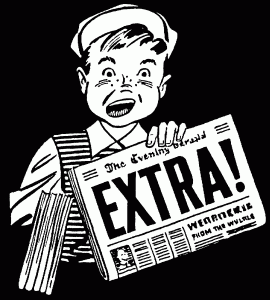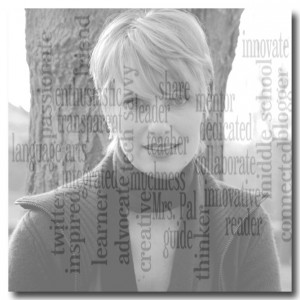7th Graders Hit the Press with Special Editions about Power and Control!
So, I’ve been MIA. I haven’t been lazy or unmotivated, I’ve been piloting a Google Apps program in my 7th and 8th grade classes. My next post will detail my amazing experience teaching and learning in the Google cloud. For now, I’d like to highlight a favorite collaborative project done completely in Google.
Tolerance and Acceptance drives the 7th grade curriculum. My essential question for the year is What is right? Tolerance and Acceptance is explored through Power and Control, Belonging, and Lessons from the Holocaust in literature, writing, poetry, journalism, and multi media. I chose Animal Farm, by George Orwell to discuss the implications of absolute power and individual control. My students actively read, had heated discussions, and wrote blog posts from the point of view of a character. These are usual occurrences in my classroom when we analyze a class novel…but my students were so engaged that I needed to give them an alternative outlet for their learning…
In thinking about the novel…a fable…I glanced down at my Kindle edition and saw “Animal Farm: A Fairy Story”. I began thinking of fables, then saw the word “fairy”, which brought me to…you guessed it…fairy tale. In my very first year of teaching (16 years ago), I did a fairy tale journalism unit where students worked collaboratively to produce an over-sized newspaper based on a fairy tale. I knew I wanted to adapt this project for Animal Farm and bring it into the 21st Century! Google was the key to doing that!
While designing this project, I thought back to the elements that made my original project successful…creativity, writing skills, and collaboration! Who knew that Google docs, Google presentation, and Google sites would come along to incorporate those original elements from 16 years ago. Before I even introduced the technology aspect of the project, students needed to learn the components of a newspaper, how to write a newspaper article, and what makes a good story. Once I established that, I could get into the nitty gritty project details.
I envisioned a digital newspaper that was created collaboratively with all of the original elements from my fairy tale newspaper which included: newspaper name, lead story, an individual article from each member of the group, editorial, letter to the editor, advice column, comic, and 2 advertisements. The project details can be found here along with detailed writing instructions here. I also provided some extra credit opportunities to add to the group newspapers, which the kids had a ball with! Students were able to work collaboratively using Google presentation and Google docs. They wrote and edited articles in docs and put together their newspaper in presentation. With these Google applications, I was able to “see” who was working on their articles, editing their newspaper, and collaborating in the cloud. This allowed me to be present in each group…even if the group was working at home! This has been a teaching game changer for me. I no longer have to worry if one student did all the work…I can see it with a time and date stamp, a revision history, and a collaborative chat window. I found this has made students more willing to own their work…and be a responsible group member. Although I had this access, I still created a Google form self/group evaluation survey that I used in assessing their project.
While planning the newspapers, I knew this would be a perfect opportunity for a multimedia component to the lesson…a newscast! I will say this…my 7th graders are not shy…they love making videos…and had no problem dressing up as cows, farmers, and reporters! With flip cameras, smartphones, and apple technologies, my students far exceeded my expectations for a newscast. I honestly wanted them to have fun with their newspapers by presenting it in a creative way. What I didn’t realize was how drawn they are to multimedia and how skilled they are in producing it! All I told them was the newscast could be live or video…they were the ones who created story boards, added special effects, used editing software, put in credits…as well as the all important bloopers section! We spent two classes completely engaged in their self produced newscasts!
In order to share all of the collaborative projects, I put together a Google site with all of the newspapers and newscasts from both sections. I won’t be sharing that here since there are student videos, but I will share a few of the completed digital newspapers. This site has allowed me to create a live portfolio for other students to learn from. I can’t wait to see what next year’s class comes up with!



![The_Mathematicians[1] The_Mathematicians[1]](https://middleschool101.edublogs.org/files/2010/03/The_Mathematicians1-300x240.jpg)